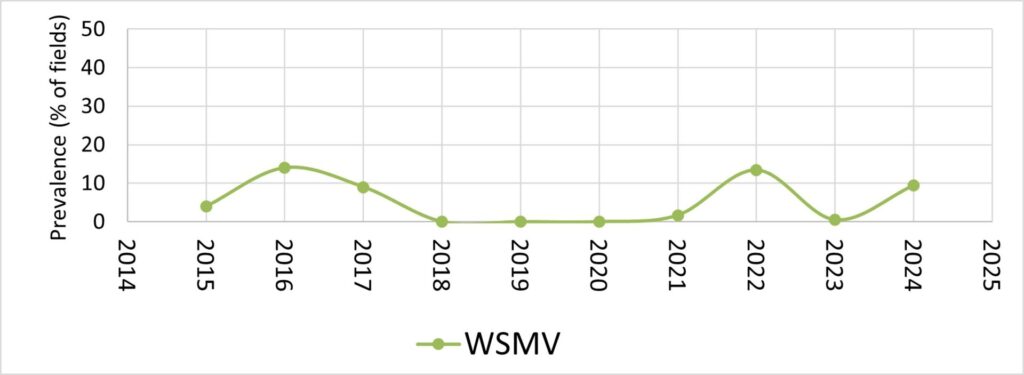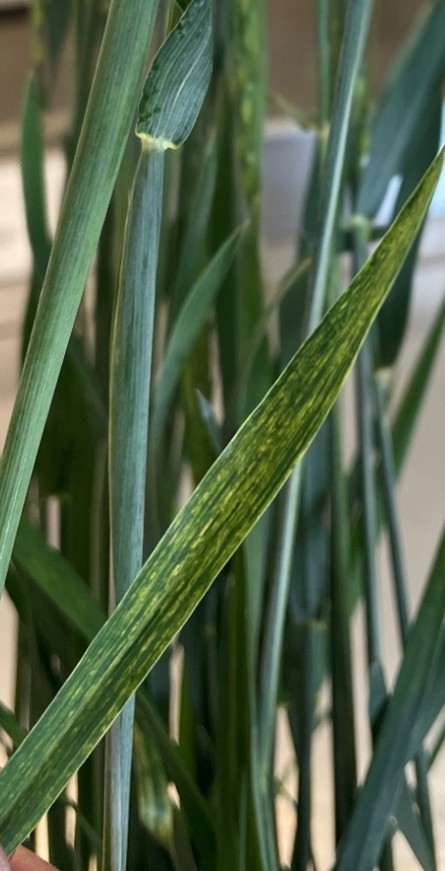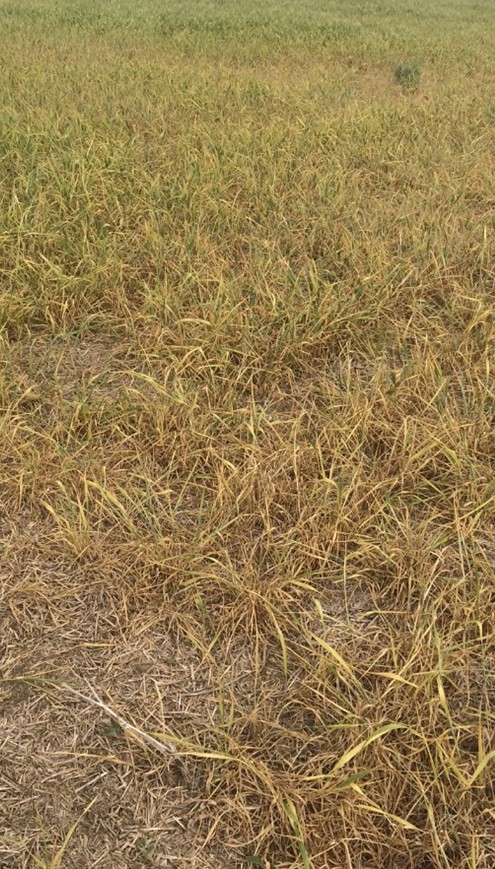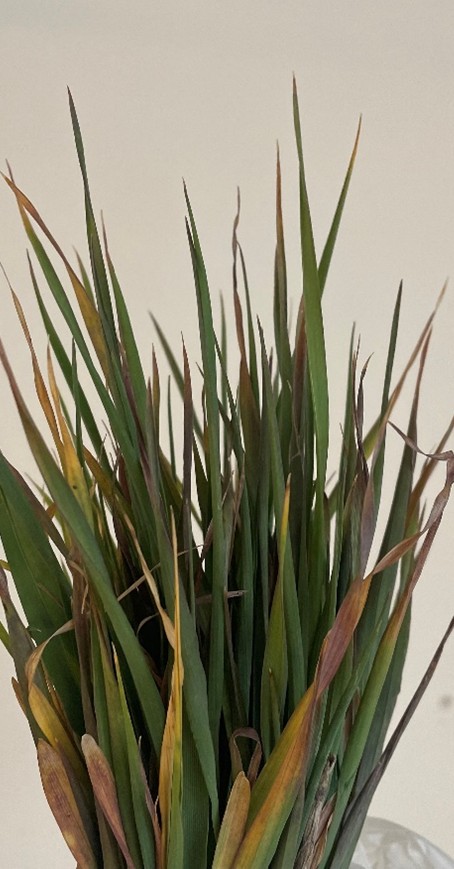Dr. Michael Harding of Alberta Agriculture and Irrigation, Brooks, AB has provided the following update on the appearance of wheat streak mosiac virus in southern Alberta as of June 12, 2025.
Wheat streak mosaic (WSM) is a disease caused by Wheat streak mosaic virus (WSMV). The virus is vectored by the wheat curl mite (Aceria tosichella). It has now been confirmed in five fields in southern Alberta.
Most years the virus and vector do not survive the winter so we don’t often see early season WSM symptoms in Alberta wheat fields. However, fall-seeded cereals can provide a “green bridge” that allow the virus and vector to overwinter. Green bridge events have been increasing over the past 3-5 years resulting in an increasing number of fields positive for WSMV, especially in 2022 and 2024.

Wheat streak mosaic virus (WSMV) prevalence in Alberta, 2014-2025 (Courtesy of Dr. M. Harding AAI, Brooks, AB)



Wheat streak mosaic virus (WSMV) symptoms (Courtesy of Dr. M. Harding AAI, Brooks, AB)
Scout for symptoms
- Producers, agronomists and crop scouts are encouraged to watch for symptoms of WSM on wheat (winter, spring, durum), barley, corn and all other cereals and grasses.
- Wheat is by far the most susceptible host, followed by barley, so these are the crops most likely to have obvious symptoms.
- When cereal crops become infected the symptoms may appear within a few days. The initial symptoms include light green streaks parallel to leaf veins that discontinuously elongate to give a mosaic coloration often alternating between chlorosis, pale green, and dark green. In severe cases symptoms coalesce to form chlorotic areas and even complete scorching and desiccation of leaves.
- On some hosts, purple discoloration may appear. Symptoms may appear first at the field edge, on volunteer wheat, or on winter wheat crops.
- At later stages, infected plants may become stunted, discolored (lemon yellow) and rosetted. If infection occurs before jointing, it can severely reduce or even prevent grain formation.
Get a laboratory confirmation
- It is not possible to consistently diagnose WSMV infections based on the mosaic symptoms on the leaves because these symptoms vary with the growth stage of the host, the virus concentration, and often overlap with symptoms of other infections or deficiencies.
- As a result, laboratory confirmations using molecular tests are strongly recommended. If you would like a sample tested for confirmation of WSMV, the Alberta Plant Health Lab is temporarily accepting samples from anyone who desires a lab test result. Samples can be sent to:
Alberta Plant Health Lab (WSMV Test)
Crop Diversification Centre North
17507 Fort Road NW
Edmonton, AB T5Y 6H3
Please contact planthealthlab@gov.ab.ca to request a sample submission form, which includes details on sample preparation and shipping.
Management of WSMV
- There are no in-season pesticides or products that can help manage WSM. Fungicides do not kill the virus, and insecticides do not kill the mite. Miticide spray applications are ineffective because the mites are microscopic and very reclusive – so they ‘hide’ in crevasses and cracks or undersides of leaves to avoid contact with the miticide.
- No spray application of pesticide will help prevent or manage WSMV. The only in-season management option for severely infected fields is to harvest the crop early for silage or green feed.
- If severe infections occur very early in the growing season, it may be best to terminate the crop and reseed with a short-season broadleaf crop, or take the crop early as green feed or silage.
- The best way to control WSMV is crop rotation and prevention of green bridge hosts. Green bridge refers to living or dormant host tissue available for the virus and vector to ‘bridge’ the winter by moving between co-occurring fall-seeded and spring-seeded crops.
- The virus and vector cannot survive for more than a week or two without a green host, therefore preventing a green bridge will break the disease cycle and prevent the problem for the next growing season. This is done by controlling/managing cereal volunteers and (most importantly) delaying seeding of winter cereals until two weeks after the spring-seeded crop is harvested.
- This two week period with no green host tissue available for survival causes the virus and mite vector to die, breaking the cycle. Winter wheat and other fall-seeded cereals can still be grown, but delayed seeding to avoid a green bridge overlap between the two crops is essential. Finally, a 2+ year break between cereals is recommended.
More information
https://www.montana.edu/cope/email-format/admin/view.php?draft=13669&uid=6849a84c000399.23947874
Contact:
Dr. Michael Harding, Crop Health Assurance Lead, Alberta Agriculture & Irrigation

